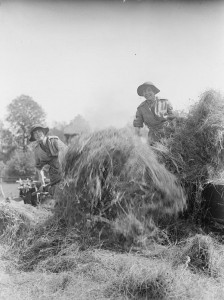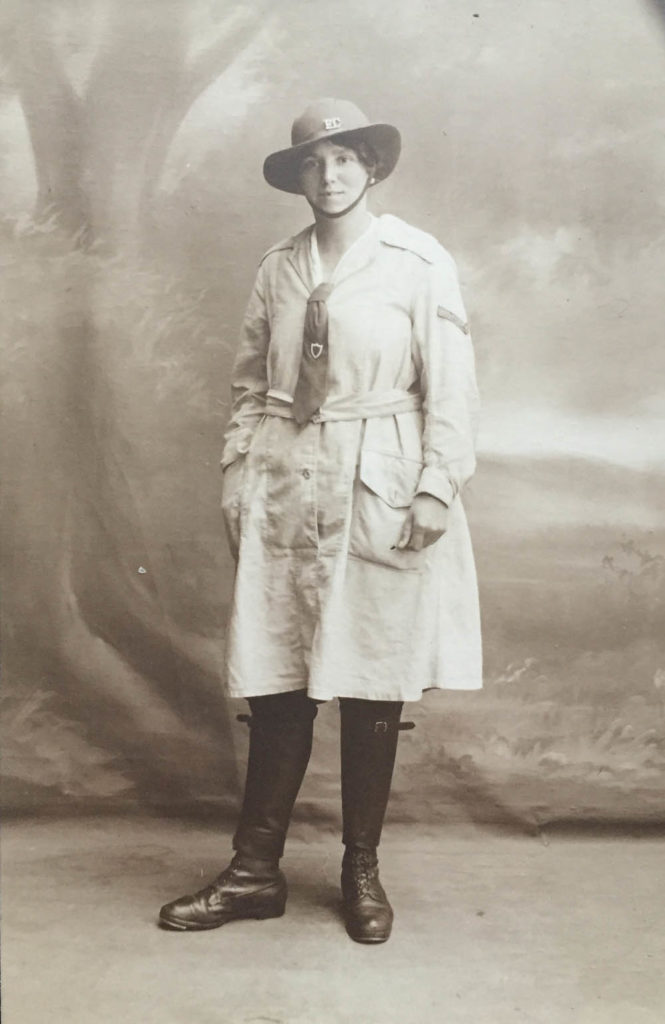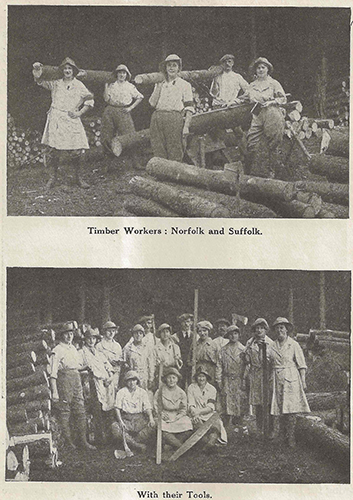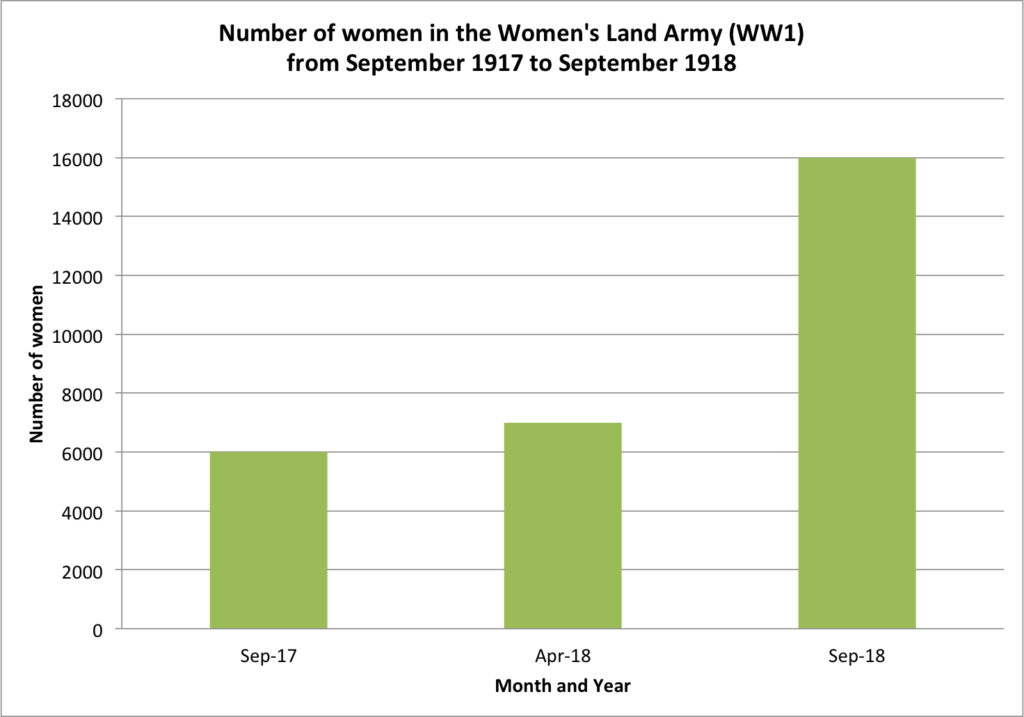Between March 1917 and May 1919 – 23,000 women passed through Women’s Land Army (WLA) training centres and became full-time land girls for different lengths of time in agricultural, forage and timber work.
- September 1917: 6,000 full-time WLA members (drop out rate negligible due to careful selection process)
- April 1918: 7,000 full-time WLA members
- September 1918: 16,000 full-time WLA members (the maximum number of land girls serving at any one time during the Great War)
To see individual employment figures for the different sections of the Women’s Land Army, please click on the relevant link below:
Agriculture
This piechart shows the employment figures for the Agricultural section in autumn 1918, broken down by types of occupation for 12,649 Women’s Land Army members. The majority were milkers and field workers.
Forage
The Forage Corps started in 1915, before becoming a section of the Women’s Land Army, working in Great Britain and Ireland.
The number of women who worked in this section are shown below:
- March 1918 – 5,000 women workers
- At end of 1919 – 8,000

Source: IWM Q30688
Forestry
The Women’s Forestry Corps was set up in 1916 and employed gangs of women to carry out forestry work to increase timber production.
These women later becoming part of the WLA. By January 1918, 400 women worked as foresters in the Women’s Land Army.

Source: Catherine Procter WLA Collection

Source: The Landswoman, February 1918, page 26.
Summary adapted by Stuart Antrobus from The Women’s Land Army: a Portrait (Gill Clarke)

